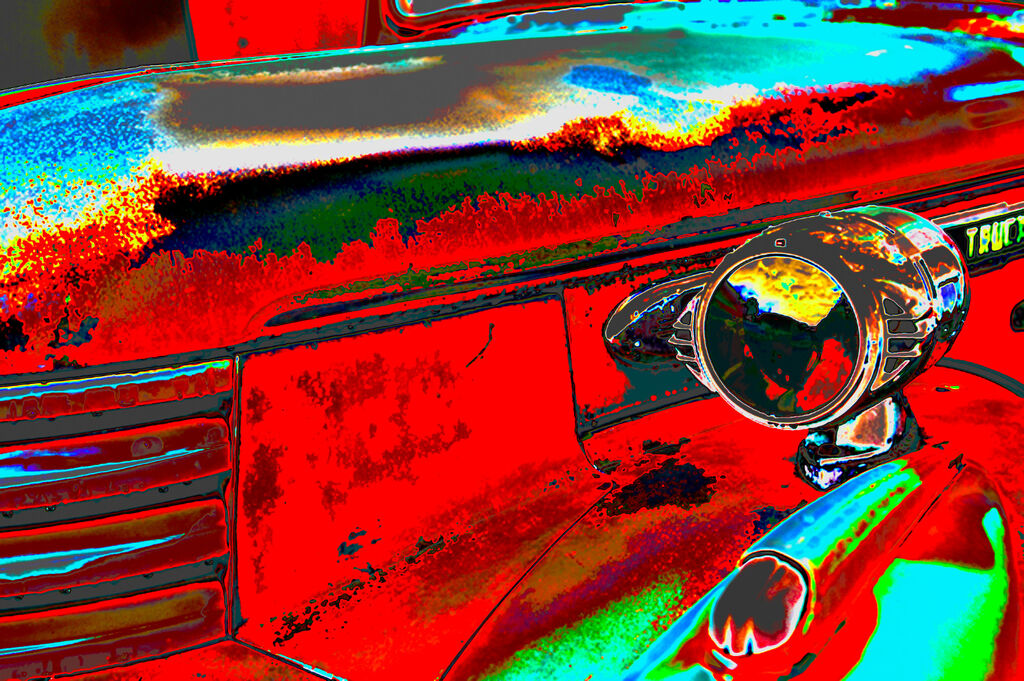A 1950 fire engine in an auto graveyard
As a general rule, I’m not a fan of solarization in photography. While it can be effective in some cases, this image, perhaps being such, often feels like a gimmick, a way to dress up a pig with lipstick.
Having worked on hundreds of movie sets, I’ve seen plenty of mediocre directors of photography fall back on flashy techniques, like dousing scenes in multiple-coloured lights, to mask their lack of skill. They hope to distract the audience from poorly managed lighting with an assault of garish colours, techniques that parallel a still photographer's usage of solarization.
In my experience, the use of solarization often signals a photographer’s failure to achieve their intended look. It’s as if they’re hoping that this trick will cover up the flaws in their work, instead of addressing the real issues at hand.

